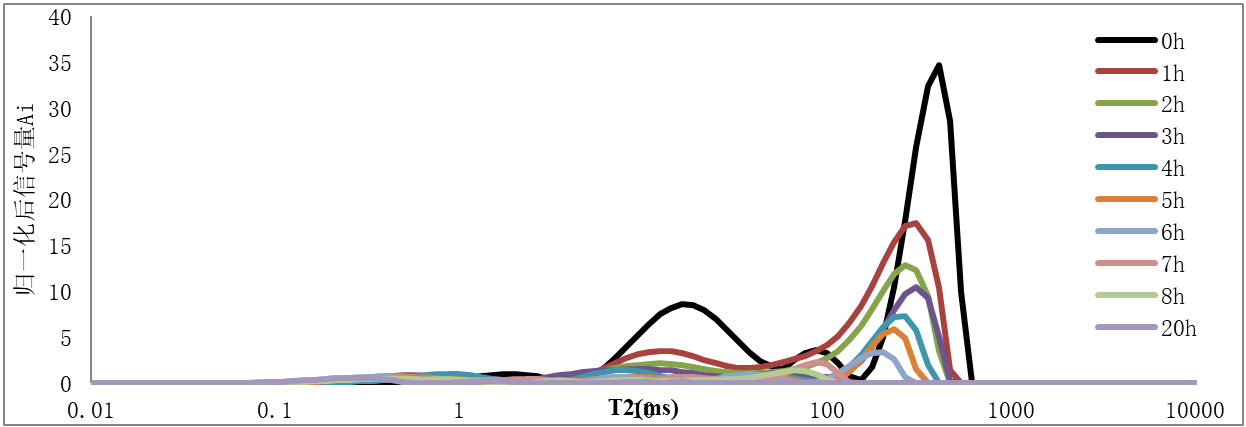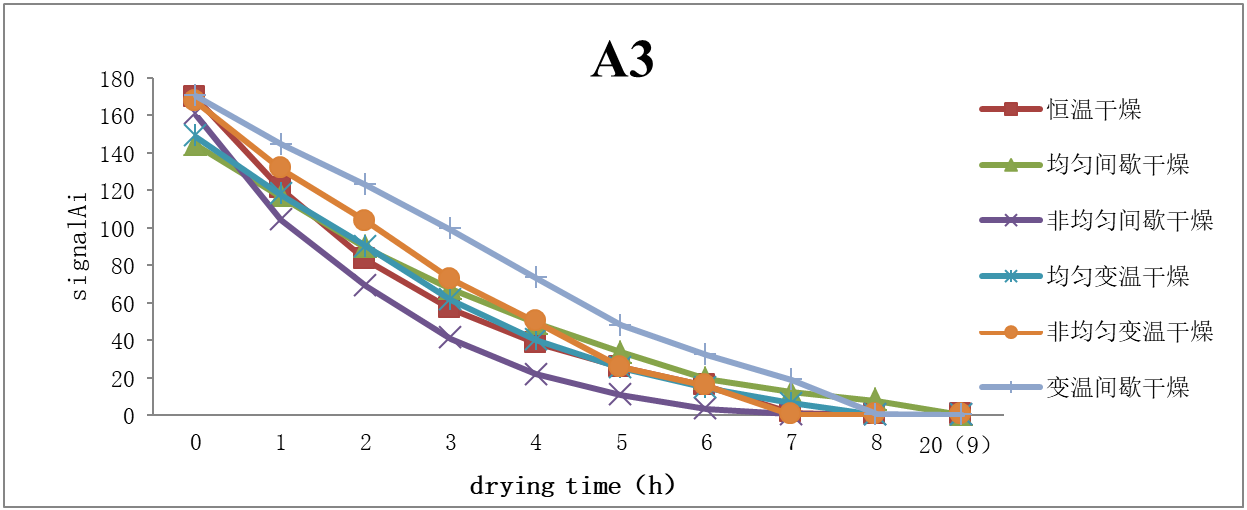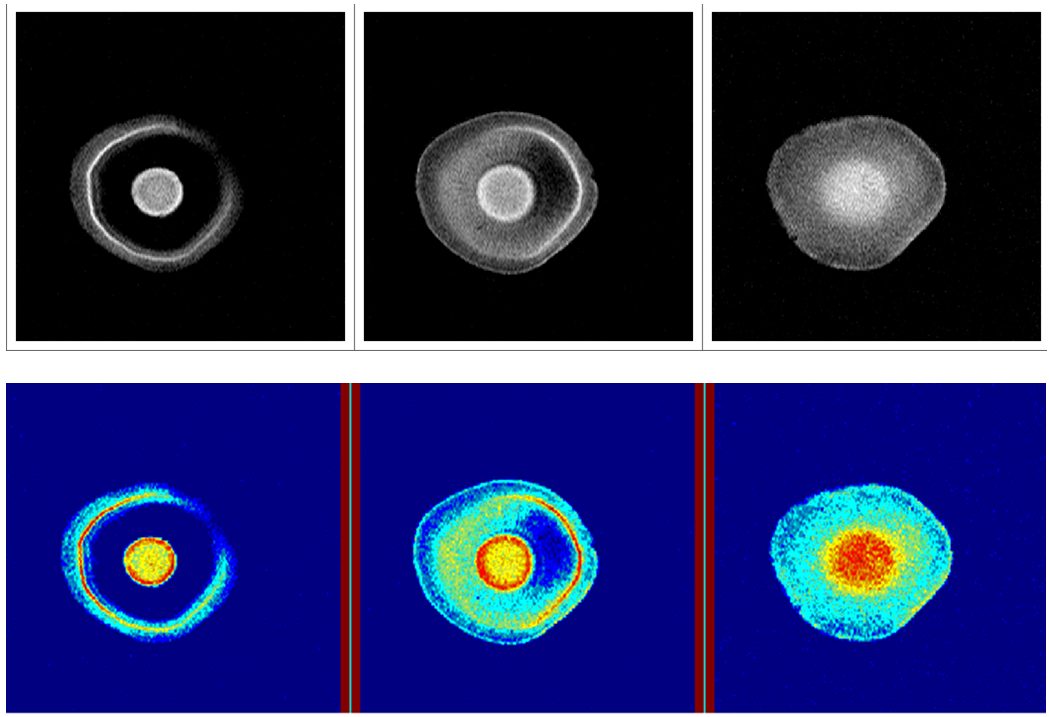Mushroom drying process studied by Time domain NMR
Sample :Shii-take
Constant temperature dry:
The shii-take is dried at 55℃constant temperature until 3% for water content,observe T2 relaxation and coronal plane imaging every hour.

constant temperature dry
Water migration
Signal Ai of T2 represent the amount of water,the signals at different drying time are as follows: with the extension of the drying time, the transverse relaxation time of the immobilized water and the free water of mushroom decreased significantly, free water and immobilized water decrease with the drying time.
It is obvious that the rate of free water desorption during variable temperature drying slower than uneven intermittent drying. There is no obvious change for bound water before and after drying. It is try to make an explanation that some immobilized water transfer to more constrained bound water, the free water and immobilized water loss with the drying time, besides, the bound water decrease to some extent.
Time Domain MRI
The proton density images of Shii-take at different drying time are as follows, it can reflect the water distribution of Shill-take.
1. constant temperature dry
It is of special interest to observe that the pseudo-color images more intuitively show the differences in each sample in layers (high proton density, red color) and the core (low-high proton density ,blue color).
we can see the water distribution and migration during drying process from these images. The water on the surface of shii-take evaporate at first.,when the water diffusion rate slower than the gasification rate for the surface water of shii-take. the surface of shii-take are dried.,with the extension of drying time,water evaporation transfer from the surface to the inside.
 NIUMAG
NIUMAG


WeChat
Scan the QR Code with WeChat